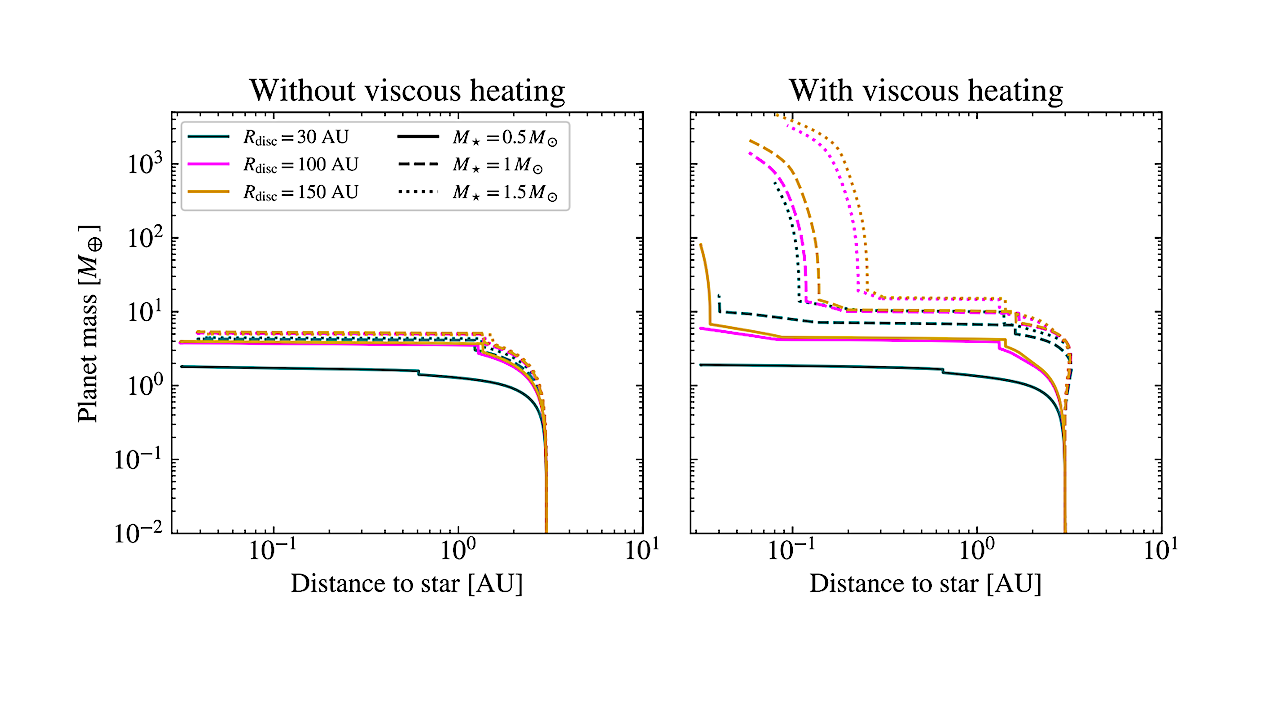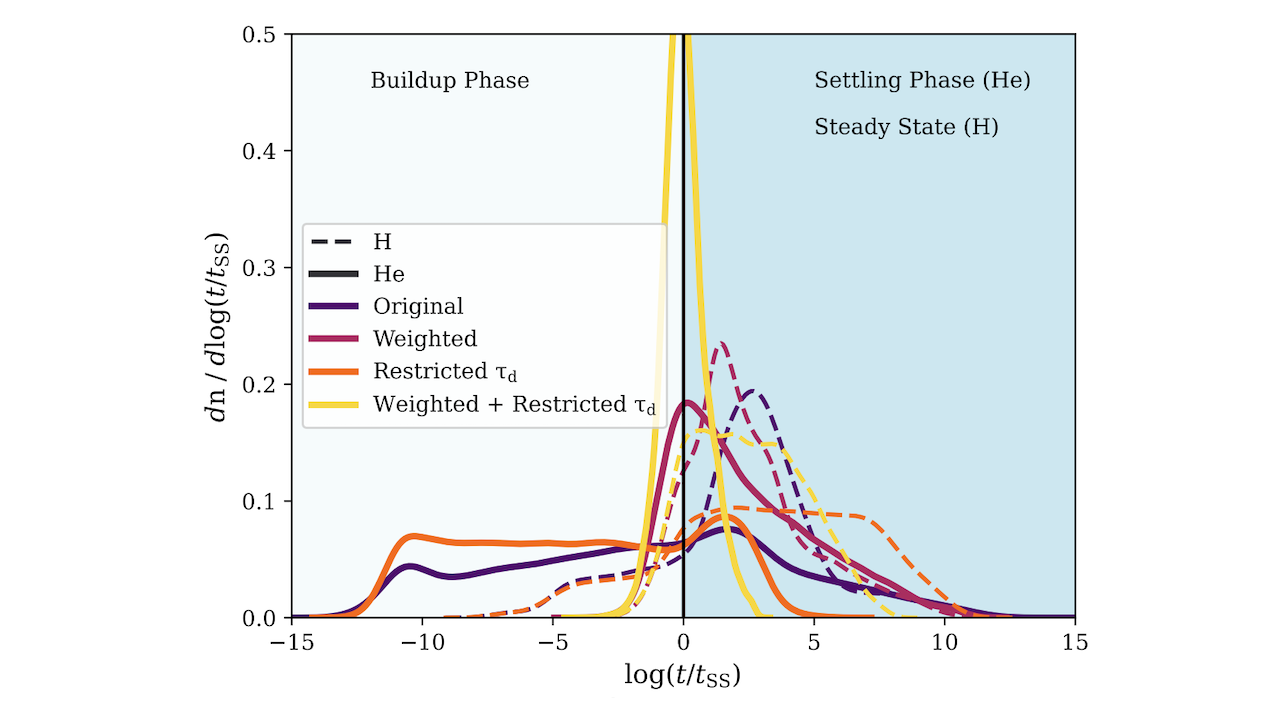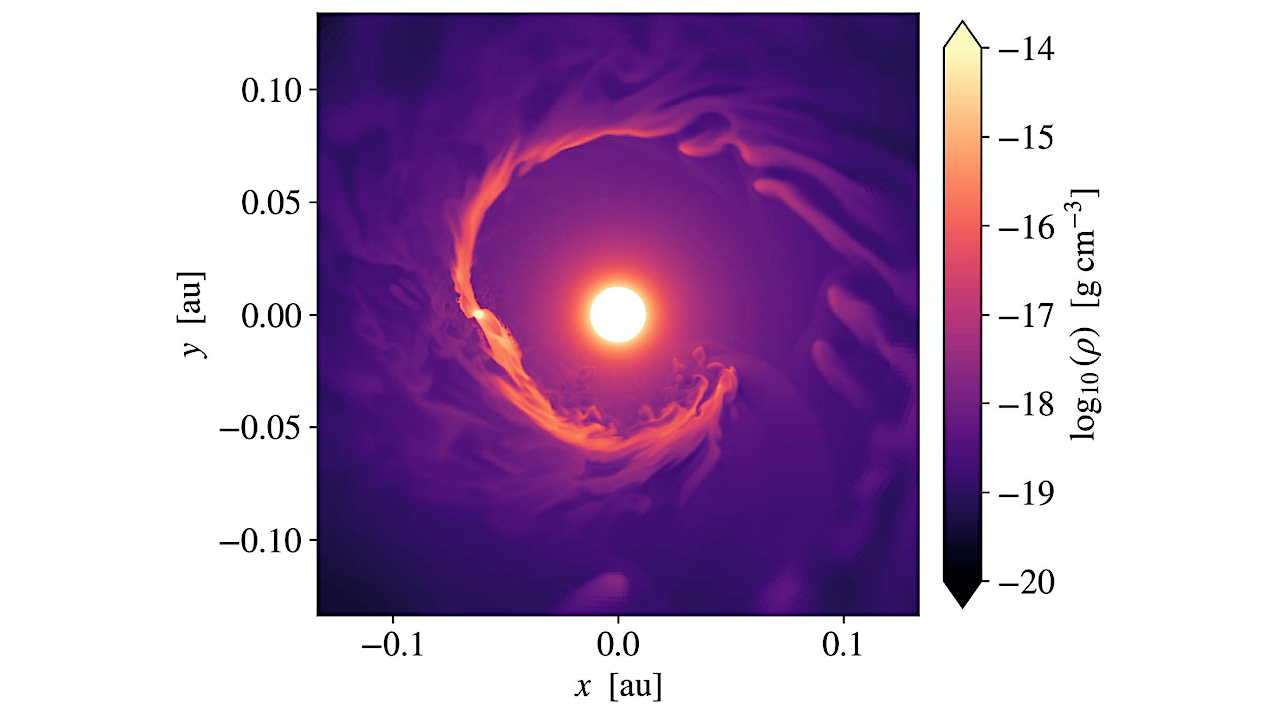ID: ESP_066552_1215, date: 7 October 2020,altitude: 247 km,NASA/JPL-Caltech/University of Arizonalarger image This HiRISE image shows a deposit draping the surface like a blanket. The deposit is eroding away, and near
Astrobiology33- Page
The explosion left behind an interstellar gas-and-dust cloud rich in silicon (gray), sulfur (yellow) and argon (purple). Credit: Keck Observatory/Adam Makarenko Massive stars have a layered structure, similar to an
GC content, total number and their frequencies of PQS in H. volcanii genome. (A) Schematic presentation of a G-quartet (left) and a G-quadruplex (right). (B) Total PQS counts, percentage of
Growth tracks of a single planet injected at r = 3 AU and t = 104 yr. In the irradiated case (left), this results in the formation of a super-Earth
Altitude integrated joule heating for scale factors 1, 5, and 10. Gradient uses the same maximum value for visible demonstration of the changes between the images — astro-ph.EP Identifying Earth-like
The distribution of accretion parameters relative to steady state derived from the posteriors of the MCMC tests, separated based on the dominant atmospheric species. To compare accretion phases, we have
3D hydrodynamic simulation of atmospheric escape from Ref. 8, for a system similar to HAT-P-67 b. Figure 2a shows the gas density. The star is in the center of the
NASA’s Curiosity Mars rover used its Mars Hand Lens Imager (MAHLI), a camera on the end of its robotic arm, to view this wind-eroded rock shaped like a piece of
NASA ID: iss073e0545092 iss073e0545092 (Aug. 26, 2025) — larger image NASA astronaut and Expedition 73 Flight Engineer Zena Cardman works inside a portable glovebag aboard the International Space Station’s Harmony
-
 012024 in Review: Highlights from NASA in Silicon Valley
012024 in Review: Highlights from NASA in Silicon Valley -
 02Panasonic Leica Summilux DG 15mm f/1.7 ASPH review
02Panasonic Leica Summilux DG 15mm f/1.7 ASPH review -
 03How New NASA, India Earth Satellite NISAR Will See Earth
03How New NASA, India Earth Satellite NISAR Will See Earth -
 04And Thus Begins A New Year For Life On Earth
04And Thus Begins A New Year For Life On Earth -
 05Astronomy Activation Ambassadors: A New Era
05Astronomy Activation Ambassadors: A New Era -
06SpaceX launch surge helps set new global launch record in 2024
-
 07Space Force plans new ‘Futures Command’ amid pressure to speed up modernization
07Space Force plans new ‘Futures Command’ amid pressure to speed up modernization













